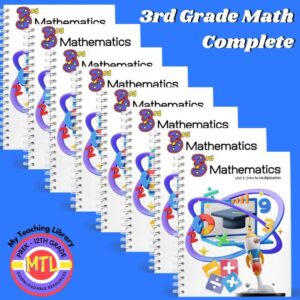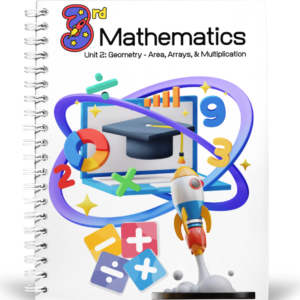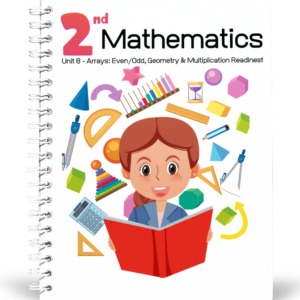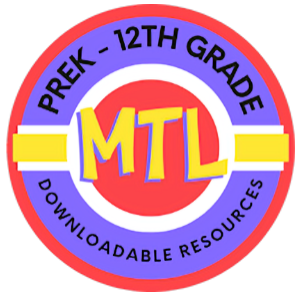Showing all 3 resultsSorted by latest
-
Sale!
 Buy Now
Buy Now$40.50Original price was: $40.50.$35.00Current price is: $35.00.3rd Grade Math Complete is an 8 unit program that covers all of the important skills and concepts typically covered in 3rd grade. Each unit includes the student and teacher edition. This resource can be used within a classroom setting, co-op or with individual students. Because it can be used within a group setting, you’ll find many activities for students to complete in pairs of 2. If you are homeschooling multiple children close in age, it would be easy to adapt and teach students together. If you are homeschooling a single child, you can easily adapt these activities through your one-on-one interaction!
You do not need to use the entire program if you are only wanting to focus on one or a few specific Math skills and concepts. If this is the case, you can purchase each unit separately.
Units:
- – Unit 1: Intro to Multiplication
- – Unit 2: Geometry: Area, Arrays and Multiplication
- – Unit 3: Reviewing Addition & Subtraction within 1,000
- – Unit 4: Relating Multiplication and Division
- – Unit 5: Fractions – Number Lines, Equivalent & Comparing
- – Unit 6: Measurement – Length, Time, Volume & Weight
- – Unit 7: Geometry – 2 Dimensional Shapes, Area & Perimeter
- – Unit 8: Review of 3rd Grade Skills & Concepts
-
 $5.00Buy Now
$5.00Buy NowIn this unit, students encounter the concept of area, relate the area of rectangles to multiplication, and solve problems involving area. Students make sense of another attribute of shapes: a measure of how much a shape covers. They begin informally, by comparing two shapes and deciding which one covers more space. Later, they compare more precisely by tiling shapes with pattern blocks and square tiles. Students then focus on the area of rectangles. They notice that a rectangle tiled with squares forms an array, with the rows and columns as equal-size groups. This observation allows them to connect the area of rectangles to multiplication—as a product of the number of rows and number of squares per row. To transition from counting to multiplying side lengths, students reason about area using increasingly more abstract representations. They begin with tiled or gridded rectangles, move to partially gridded rectangles or those with marked sides, and end with rectangles labeled with their side lengths. Students also learn some standard units of area—square inches, square centimeters, square feet, and square meters—and solve real-world problems involving area of rectangles. Later in the unit, students find the area and missing side lengths of figures composed of non-overlapping rectangles.
Includes: Student and Teacher Editions
Size: 306 pages -
 $5.00Buy Now
$5.00Buy NowIn this unit, students develop an understanding of equal groups, building on their experiences with skip-counting and with finding the sums of equal addends. The work here serves as the foundation for multiplication and division in grade 3 and beyond. Students begin by analyzing even and odd numbers of objects. They learn that any even number can be split into 2 equal groups or into groups of 2, with no objects left over. Students use visual patterns to identify whether numbers of objects are even or odd. Next, students learn about rectangular arrays. They describe arrays using mathematical terms (rows and columns). Students see the total number of objects as a sum of the objects in each row and as a sum of the objects in each column, which they express by writing equations with equal addends. They also recognize that there are many ways of seeing the equal groups in an array. Later, students transition from working with arrays containing discrete objects to equal-size squares within a rectangle. They build rectangular arrays using inch tiles and partition rectangles into rows and columns of equal-size squares. The work here sets the stage for the concept of area in grade 3.
Includes: Student and Teacher Editions
Size: 263

